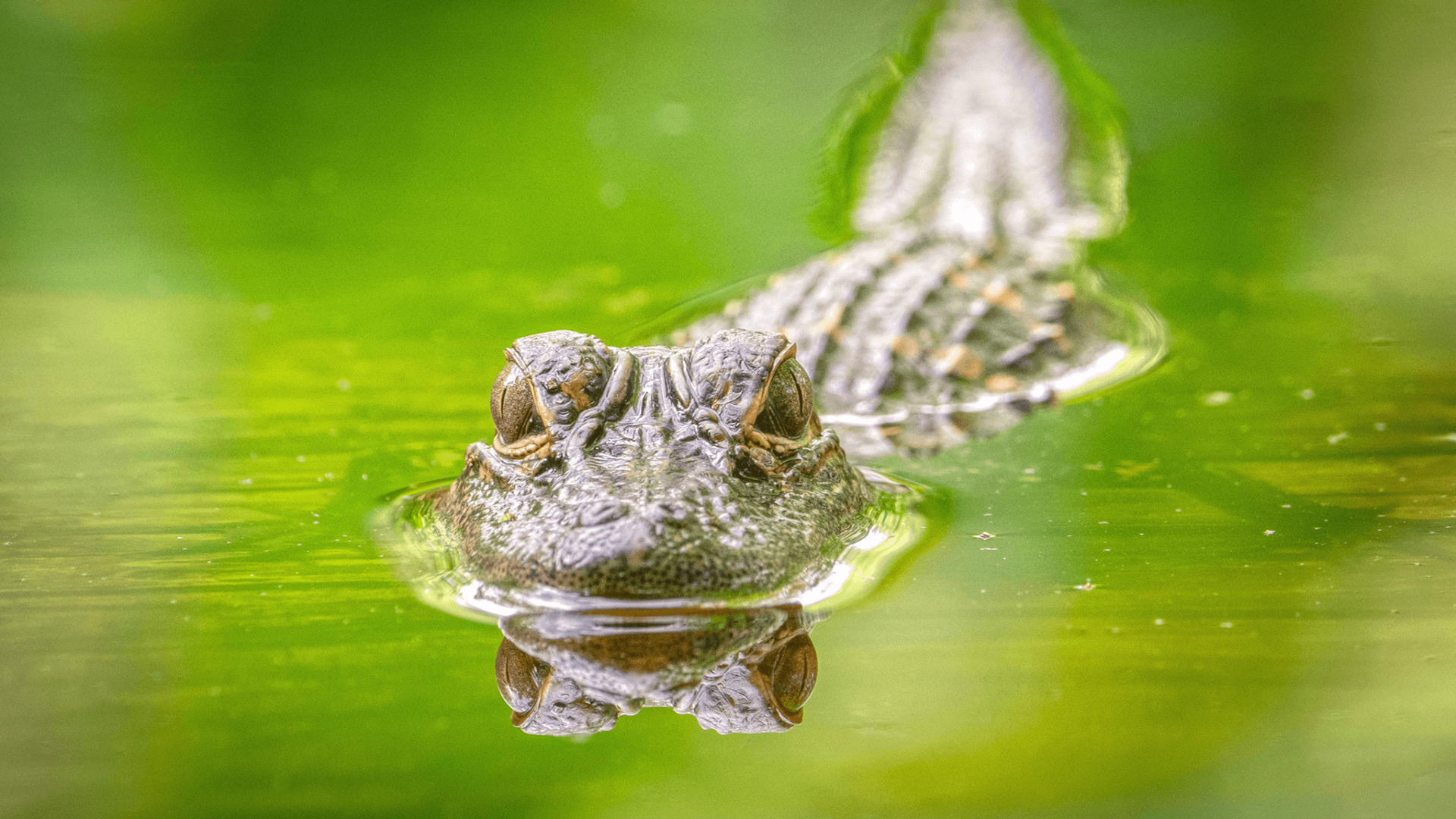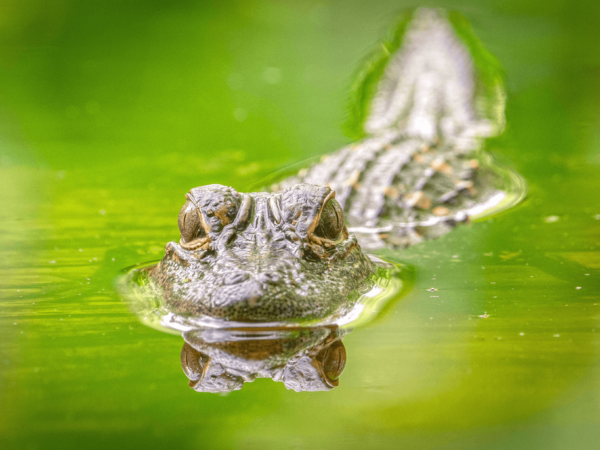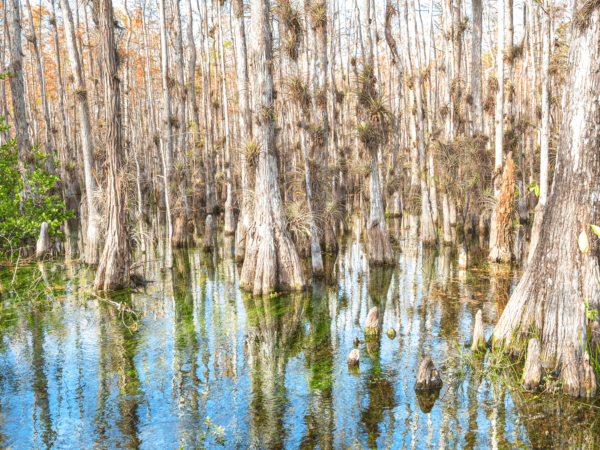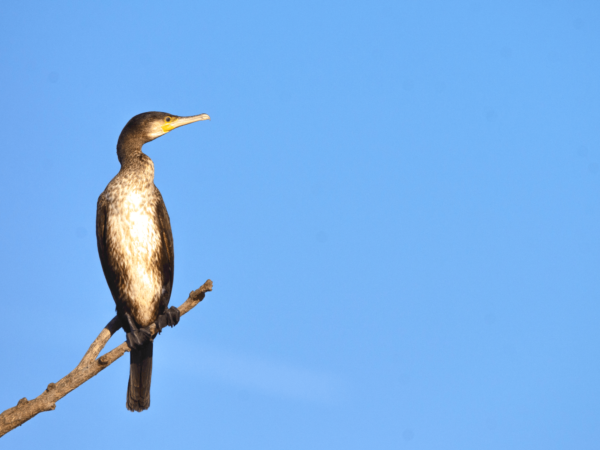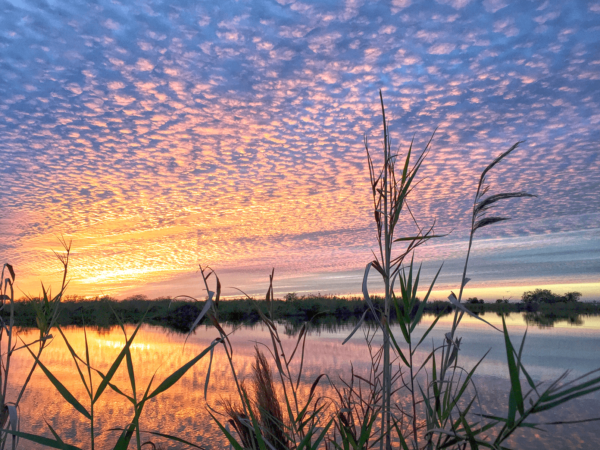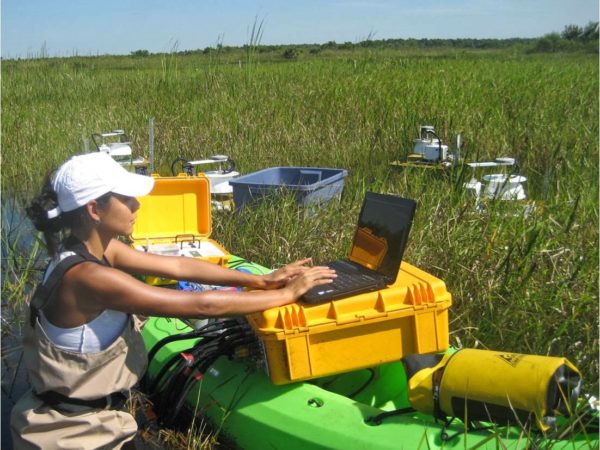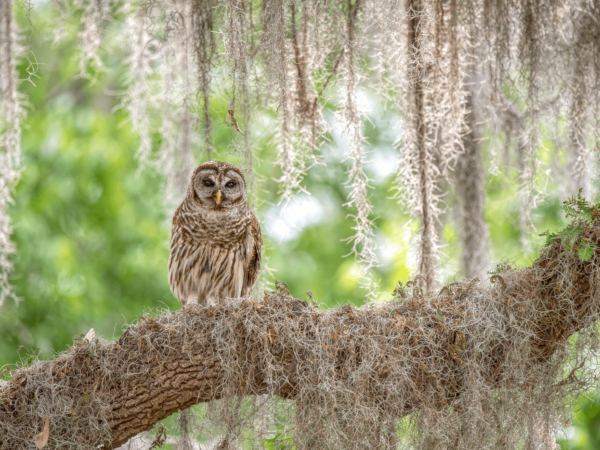Welcome. The Everglades is a vast system of wetlands that includes the Arthur R. Marshall Loxahatchee National WIldlife Refuge is home to at least 56 kinds of nesting birds. However, over 200 species use the Refuge either as a year round home or as a stopover while migrating. Most birds have beaks that are fit for a particular kind of food that is found where they live. Often their feet, feathers and eyes have also adapted for their food sources. That means that birds, like most animals, experienced changes to their features, over a period of time that help them survive better in their specific habitat.
Wading birds; including, Herons, Egrets, Roseate Spoonbills and the endangered Wood Storks each approach feeding differently. Wood Storks use their large feet to “stir” and startle prey in muddy pools. Spoonbills; often mistaken for flamingos due to their pink color, sweep their oversize beaks in shallow water. Herons and egrets will strike their prey with their long sharp bills. For many wading birds, the level and clearness of the water is vital to their ability to capture small aquatic animals like fish, crayfish, shrimp and frogs. Limpkins love apple snails. They wade from shore, feeling for snails on the bottom with their beaks. When they find one, they bring it back to shore and methodically hammer away at it to break its shell and extract the snail.
Waterfowl, such as ducks and geese are omnivores; they eat plants and animals such as insects, algae, crustaceans and plants found in and around the water. Watching ducks plunge below the surface to capture fish in deep water distinguishes these “diving” ducks from “dabbling” ducks. The dabblers tip their bodies up when feeding with their heads underwater. Duck feathers are waterproof due in part to a waxy coating that ducks spread on their feathers when cleaning or preening. This waxy substance comes from a preen gland near the base of the tail.
Two diving birds that are not waterfowl but are regularly confused by newcomers to the Everglades are the Anhinga, often called a snakebird or water turkey and the Double-Crested Cormorant. The Cormorant has a more pronounced hook on its beak. The Anhinga is often seen regally sitting in the sun with its wings wide open. They are actually raising their body temperature since their feathers cannot trap air to keep themselves warm when they are swimming underwater. Perching birds, also known as songbirds, rely on all of the habitats of the Refuge for food and nesting. Red-winged blackbirds, among the more abundant songbirds on the Refuge, crack open seeds with their thick bills as they perch on the sides of branches. Warblers and vireos, with their slender beaks, are insect eaters; but will also feed on fruit when migrating. Woodpeckers, such as the large and striking Pileated Woodpecker and the smaller Red-bellied Woodpecker can be seen and heard perched on the sides of the trees chiseling loudly into the wood searching for insects.

